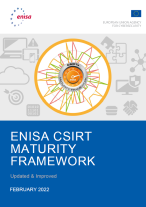
This document marks the first report on the state of cybersecurity in the Union, adopted by ENISA in cooperation with the NIS Cooperation Group and the European Commission, in accordance with Article 18 of the Directive (EU) 2022/2555 (…
This document marks the first report on the state of cybersecurity in the Union, adopted by ENISA in cooperation with the NIS Cooperation Group and the European Commission, in accordance with Article 18 of the Directive (EU) 2022/2555 (…
Seven prime cybersecurity threats were identified in 2024, with threats against availability topping the chart and followed by ransomware and threats against data, and the report provides a relevant deep-dive on each one of them by analysing…
This study highlights the complexities behind the notion of cyber crisis and the degree of subjectivity it involves. The elevation of a large-scale cyber incident into a cyber crisis relies predominantly on a political decision, and depends…
Pagination